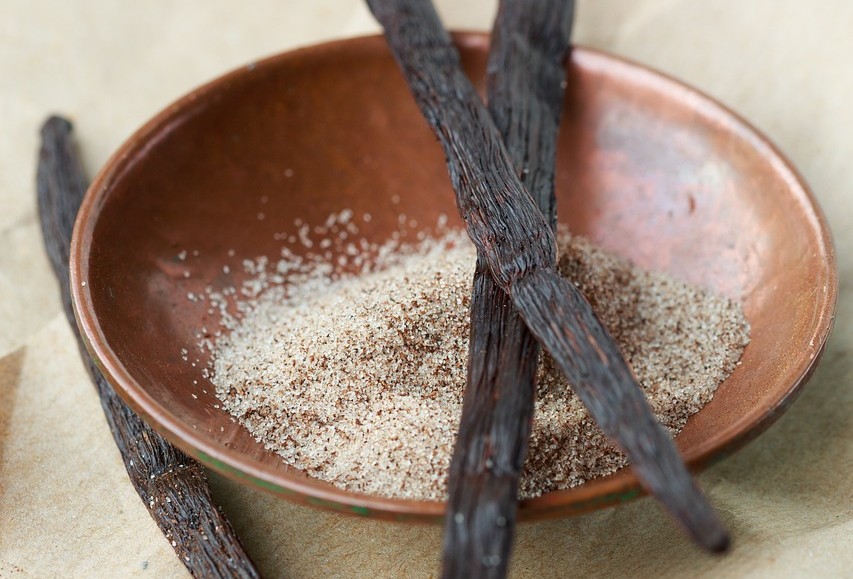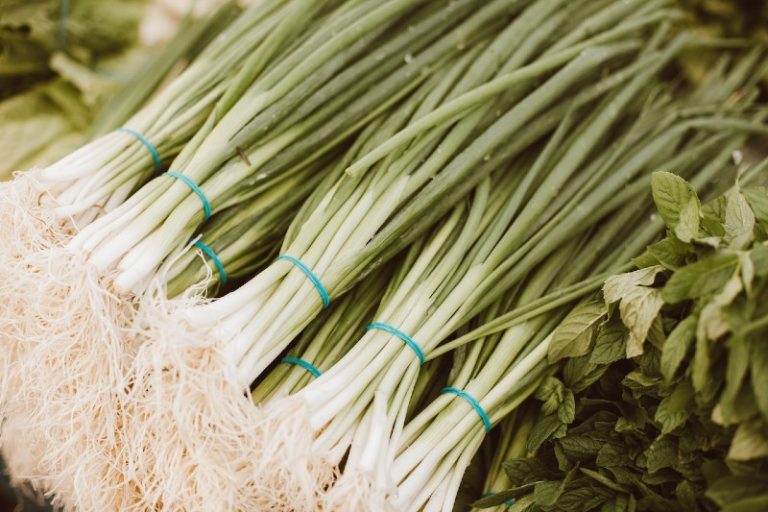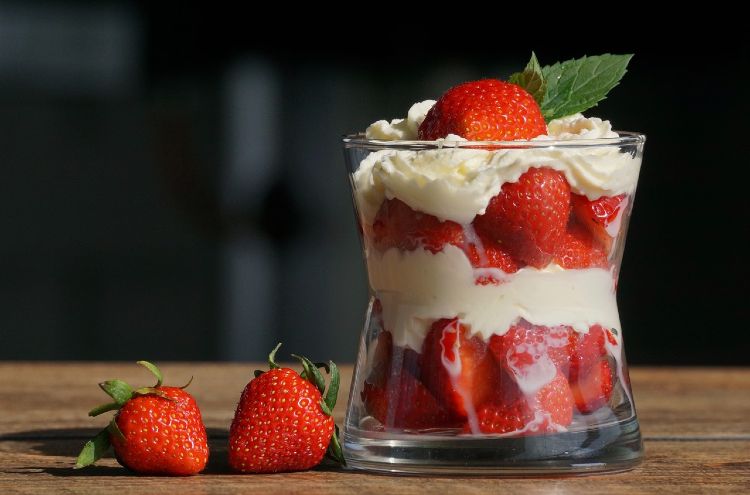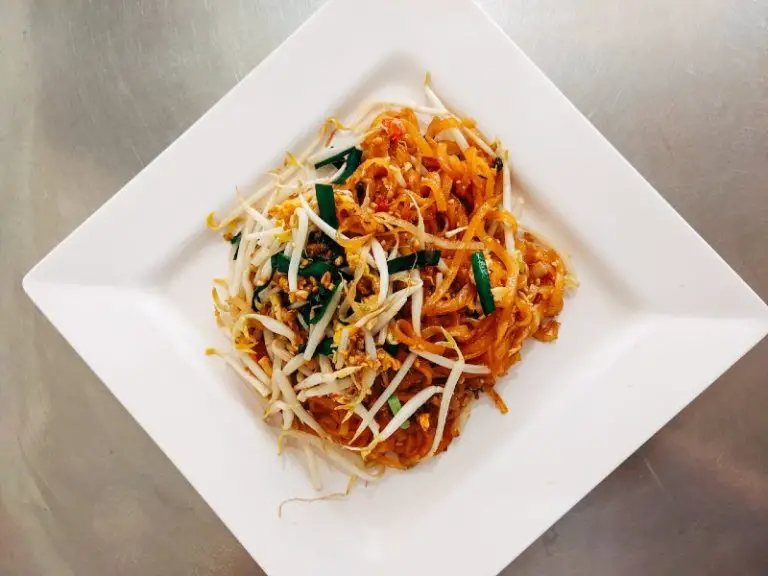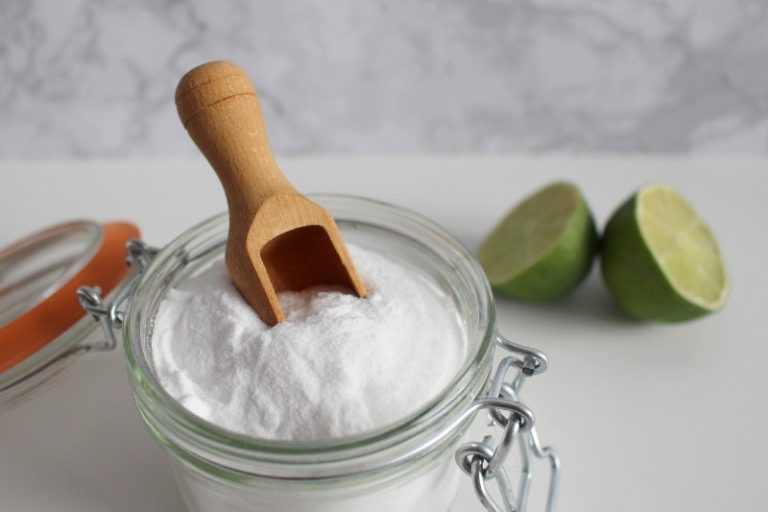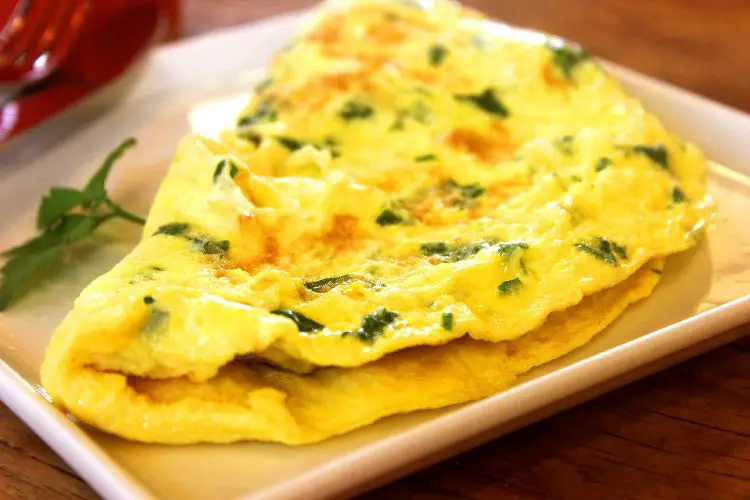Beyond Vanilla Sugar: Sweet Substitutes for Tantalizing Treats!
Vanilla sugar, a delightful blend of sugar infused with the aromatic essence of vanilla, holds a special place in the world of culinary arts. More than just a sweetening agent, it has graced kitchens around the world, serving as a secret ingredient that can elevate even the simplest of recipes to something magical.
However, as integral as vanilla sugar might be in certain dishes, there are instances where one might find themselves without this aromatic ingredient. Whether it’s due to unavailability, dietary preferences, or the sheer spontaneity of impromptu cooking, there’s a need for alternatives. Furthermore, with the global vanilla crop being subjected to fluctuating market prices and climate-related challenges, vanilla, and consequently vanilla sugar, can sometimes be pricier or harder to come by.
List of Vanilla Sugar Substitutes
Natural Substitutes
Vanilla Extract
Vanilla extract is a potent liquid derived from steeping vanilla beans in an alcohol-water solution. The process begins with selecting and harvesting mature vanilla beans. After a curing and drying process, these beans are then chopped and immersed in the solution, usually made with ethanol. Over time, anywhere from a few months to several years, the alcohol extracts the rich flavors and aromatic compounds from the beans, resulting in a dark, aromatic, and flavorful liquid that many recognize as vanilla extract.
Recommended Substitution Ratio for Vanilla Sugar
When substituting vanilla extract for vanilla sugar, the key is to balance flavor without adding too much liquid to the recipe. Generally, for every teaspoon of vanilla sugar, you can use 1/4 to 1/2 teaspoon of vanilla extract. However, you may need to adjust the quantity of sugar in the recipe since vanilla extract doesn’t contain sugar itself.
Pros
- Intensity: Vanilla extract packs a robust vanilla flavor, often requiring less quantity to achieve the desired taste.
- Availability: It’s widely available in grocery stores, making it an accessible substitute.
- Shelf Life: Stored in a cool, dark place, vanilla extract can last indefinitely, making it a pantry staple.
Cons
- Liquid Consistency: Its liquid form can potentially alter the consistency of some recipes, especially if large quantities are required.
- Alcohol Content: While the alcohol content typically burns off during cooking or baking, it might not be suitable for all dishes or preferences.
- Price: Pure vanilla extract can be pricey, given the labor-intensive process of cultivating and processing vanilla beans.
Vanilla Bean
he vanilla bean is the original source of all vanilla flavors and fragrances. It’s a long, slender pod harvested from the orchids of the genus Vanilla, primarily from the species Vanilla planifolia. Native to Mexico, vanilla cultivation spread to various parts of the world, notably Madagascar, Tahiti, and Indonesia. Each region produces beans with subtle flavor nuances, but they all carry the signature sweet, floral, and woody notes that vanilla enthusiasts cherish.
How to Use in Recipes as a Replacement for Vanilla Sugar
To use a vanilla bean in place of vanilla sugar:
- Slice the bean lengthwise with a sharp knife to expose the tiny, fragrant seeds inside.
- Using the back of the knife or a spoon, scrape out the seeds.
- Mix these seeds into your recipe. They’ll disperse and infuse the dish with a rich vanilla flavor.
- For an enhanced effect, the split pod can be simmered or steeped in liquids (like milk or cream) to extract even more flavor. Remember to remove the pod before serving.
For substituting vanilla sugar: one vanilla bean usually equates to 1-2 teaspoons of vanilla sugar, but this can vary based on the size and potency of the bean.
Pros
- Potent Flavor: Vanilla beans offer a deep, rich vanilla flavor that’s hard to replicate with processed alternatives.
- Visual Appeal: The small black specks of vanilla seeds can enhance the visual appeal of dishes like custards, ice creams, and crème brûlées.
- Versatility: Beans can be used in both solid and liquid recipes and can be repurposed. For example, an emptied vanilla pod can be buried in a jar of sugar to create homemade vanilla sugar.
Cons
- Cost: Vanilla beans are one of the most labor-intensive crops to cultivate and, as a result, can be quite expensive.
- Availability: Depending on your location, quality vanilla beans can be harder to find than other vanilla products.
- Shelf Life: While they can be stored for extended periods if kept dry and cool, they can dry out or lose potency over time.
Vanilla Paste
Vanilla paste is a thick, syrupy blend that merges the convenience of vanilla extract with the potency and visual appeal of vanilla beans. It is made by suspending finely ground vanilla beans in a mixture of sugar, water, and a thickening agent, often combined with vanilla extract to intensify the flavor. The result is a rich, textured paste that carries the flecks of real vanilla beans, offering both the flavor and appearance of genuine vanilla.
Conversion from Vanilla Sugar to Vanilla Paste
When substituting vanilla paste for vanilla sugar, a general rule of thumb is to use 1 teaspoon of vanilla paste for every teaspoon of vanilla sugar. However, considering the additional sweetness from the sugar content in vanilla paste, you may need to slightly reduce the amount of additional sugar in your recipe.
Pros
- Concentrated Flavor: Vanilla paste delivers a robust vanilla flavor, often more pronounced than extract, but less intense than a whole bean.
- Visual Impact: The paste contains the tiny, black seeds from the vanilla pod, offering a speckled appearance in finished dishes similar to that of the vanilla bean.
- Ease of Use: It’s simpler to use than a vanilla bean since there’s no need to scrape out seeds, and it blends smoothly into mixtures, creams, and batters.
Cons
- Cost: While generally more affordable than whole vanilla beans, vanilla paste can be pricier than vanilla extract.
- Sugar Content: Since vanilla paste contains sugar, it may not be suitable for recipes where you’re trying to control or minimize sugar content.
- Consistency: The thick nature of vanilla paste might not be ideal for all recipes, especially those requiring a more liquid consistency.
Sweetener-Based Substitutes
Plain Sugar
At its core, vanilla sugar is essentially plain sugar that’s been infused with the flavor of vanilla. Thus, the primary difference between the two lies in the flavor profile.
- Flavor: Plain sugar lacks the aromatic depth and warmth that vanilla brings to vanilla sugar. While plain sugar offers sweetness, it doesn’t carry any of the fragrant, woody undertones of vanilla.
- Sweetness: In terms of sheer sweetness, plain sugar and vanilla sugar are on par with each other. The vanilla in vanilla sugar doesn’t affect its sweetness level, but rather, it elevates the overall flavor.
When It’s Appropriate to Use
Using plain sugar as a substitute for vanilla sugar is context-dependent:
- Background Notes: If vanilla plays a secondary or background role in the recipe, then plain sugar can be an appropriate substitute. The absence of vanilla might not be noticeably detrimental.
- Primary Flavor: In recipes where vanilla stands out as a primary flavor, such as in certain cookies, cakes, or custards, substituting with plain sugar would result in a noticeable change in the end product’s flavor profile. In such cases, combining plain sugar with another form of vanilla (like extract or paste) would be more suitable.
- Texture Over Taste: For recipes where sugar’s primary role is to provide texture or structure (like in certain cookie recipes or as a caramelizing agent) rather than flavor, plain sugar can directly replace vanilla sugar.
- Economic Concerns: Given the sometimes-high cost of vanilla-infused products, using plain sugar and adding a dash of vanilla extract can be a more budget-friendly approach to achieve a similar flavor to vanilla sugar.
Maple Syrup or Honey
Maple Syrup
Extracted from the sap of sugar maple trees, maple syrup boasts a unique flavor profile that is a blend of caramel, vanilla, and woody notes. It can impart a rich, warm depth to recipes, particularly suitable for fall-themed dishes, pancakes, or waffles. Its unique taste can complement baked goods, sauces, and even savory dishes with a hint of sweetness.
Honey
This golden, viscous liquid produced by bees has a sweet, floral aroma and flavor. Depending on its source (which flowers the bees have pollinated), honey can have varying flavor notes, ranging from mild and fruity to robust and earthy. It can seamlessly integrate into an array of dishes, including dressings, baked goods, teas, and marinades, adding a layer of complex sweetness.
Conversion Ratio for Substituting Vanilla Sugar
Given that both maple syrup and honey are liquids, when substituting them for vanilla sugar, adjustments to the recipe might be needed:
- For every 1 teaspoon of vanilla sugar, consider using:
- 1 to 1.5 teaspoons of maple syrup or
- 1 teaspoon of honey
However, you may need to reduce other liquids in the recipe to maintain the desired consistency.
Pros
- Natural Sweeteners: Both maple syrup and honey are natural sweeteners, free from artificial additives, and can be a healthier alternative to processed sugars.
- Complex Flavor Profiles: Unlike plain sugar, both these sweeteners offer multifaceted flavors that can enhance a recipe’s overall taste.
- Versatility: They can be used in a plethora of recipes, both sweet and savory.
Cons
- Consistency: Being liquids, they can alter the texture of certain recipes, especially baked goods.
- Sweetness Intensity: Honey and maple syrup can be sweeter than regular sugar, so adjustments might be needed to avoid overly sweet results.
- Cost: High-quality, pure maple syrup and certain varieties of honey can be pricier than regular sugar.
In conclusion, while maple syrup and honey offer delightful, nuanced flavors that can enrich many recipes, their use as substitutes for vanilla sugar requires a thoughtful approach. Taking into account their liquid nature and sweetness intensity is crucial to achieve the desired taste and texture in the final dish.
Homemade Vanilla Sugar Substitutes
Vanilla-Infused Sugar
Making your own vanilla-infused sugar is a rewarding culinary endeavor that allows you to tailor the flavor intensity to your preferences. Here’s a simple step-by-step guide to creating this delightful substitute:
Ingredients
- Granulated sugar
- Quality vanilla beans (1 to 2 beans per cup of sugar)
Instructions
- Select Quality Vanilla Beans: Choose plump and moist vanilla beans that are soft to the touch. The beans should have a strong aroma and be free from any signs of mold.
- Prepare the Beans: Split the vanilla beans lengthwise with a sharp knife, exposing the tiny seeds inside. This step is essential for releasing the flavor compounds.
- Combine Vanilla Beans and Sugar: Place the split vanilla beans in an airtight container. Cover the beans with granulated sugar. Use a ratio of 1 to 2 beans per cup of sugar, depending on how intense you want the flavor to be.
- Seal and Store: Seal the container tightly and store it in a cool, dark place. Allow the sugar to infuse with the vanilla flavor over time. Shake the container gently every few days to distribute the flavor evenly.
- Patience is Key: The infusion process can take anywhere from a few weeks to a couple of months, depending on your desired level of flavor. The longer you let it sit, the more intense the vanilla flavor will become.
- Test and Adjust: Once you’re satisfied with the flavor, remove the vanilla beans from the sugar. The infused sugar can be used immediately, or you can leave the beans in for an ongoing flavor infusion.
Importance of Using Quality Vanilla Beans
The quality of the vanilla beans you use plays a crucial role in the final flavor of your infused sugar. Opt for Grade A or Grade B vanilla beans that are plump, moist, and aromatic. High-quality beans will impart a more authentic and nuanced vanilla flavor to your sugar.
Storage Methods and Shelf Life
Store your vanilla-infused sugar in an airtight container to prevent moisture from affecting its texture. When stored properly, vanilla-infused sugar can last for several months to a year. If you leave the vanilla beans in the sugar, their moisture content might reduce the shelf life, so it’s recommended to remove them after a few months.
Alternative Flavor Substitutes
Almond Extract
Almond extract is a concentrated flavoring agent derived primarily from the oil of bitter almonds, though sometimes it can be synthesized artificially. Its flavor is intensely fragrant and evokes the unmistakable aroma and taste of almonds, with sweet, nutty, and slightly fruity undertones. Because of its potency, it’s often used sparingly in recipes, as even a few drops can impart a noticeable almond flavor.
How to Substitute in Recipes
When considering almond extract as a substitute for vanilla sugar:
- Strength: Remember that almond extract is very potent. For every teaspoon of vanilla sugar, you’d likely only need a drop or two of almond extract.
- Flavor Change: Given the distinct difference between almond and vanilla flavors, the profile of your final dish will notably change. While it may not replicate the vanilla essence, it will introduce a delightful almond nuance.
- Sweetness: Since almond extract doesn’t contain sugar, you may need to compensate for the sweetness by adding an appropriate amount of plain sugar or another sweetener.
Pros
- Intense Flavor: A small amount can dramatically flavor a dish, making it a cost-effective flavoring agent in many recipes.
- Versatility: Works exceptionally well in pastries, cookies, cakes, and other desserts, often complementing chocolate, fruit, and other nut flavors.
- Shelf Life: Almond extract has a long shelf life, similar to other extracts, making it a pantry staple.
Cons
- Distinct Flavor: Its pronounced almond flavor might not be suitable for all recipes or palates.
- Allergens: Almond extract can be problematic for individuals with nut allergies.
- Not a Direct Substitute: Unlike some vanilla substitutes that try to emulate vanilla’s flavor, almond extract introduces a completely different flavor profile.
Citrus Zests (Lemon, Orange)
Citrus zests-the outer, colorful skin of citrus fruits-are powerhouses of flavor and aroma. Packed with essential oils, they bring a bright, tangy, and sometimes sweet note to recipes. Lemon zest provides a fresh, zingy, and slightly tart aroma, perfect for invigorating and lightening up dishes. Orange zest, on the other hand, is often sweeter and more mellow, exuding a warm, fruity fragrance that can add depth and complexity to both savory and sweet recipes.
How to Use in Recipes as Vanilla Sugar Alternative
While citrus zests don’t mimic the flavor of vanilla, they can provide an equally aromatic alternative, changing the flavor profile of the dish in an exciting way:
- Zesting: Use a fine grater or zester to remove only the colored part of the fruit’s skin, avoiding the bitter white pith underneath.
- Amount: Depending on the desired intensity, 1 teaspoon of vanilla sugar can typically be replaced with the zest of half a lemon or a third of an orange. Adjust based on your taste preferences and the specific recipe.
- Sweetness: Since the zests aren’t sweet on their own, you’ll need to add plain sugar or another sweetener to the recipe to make up for the sweetness that vanilla sugar would have provided.
- Combination: Citrus zests can be paired with other flavoring agents, such as herbs or spices, to create a richer and more layered aroma in dishes.
Pros
- Bright and Fresh: Citrus zests can give recipes a vibrant, refreshing quality that’s especially appealing in warmer seasons or in rich dishes that benefit from a burst of freshness.
- Versatility: They can be incorporated into a wide range of dishes, from baked goods and cocktails to sauces and marinades.
- Natural and Unprocessed: Zests are natural flavoring agents, free from artificial additives and preservatives.
Cons
- Different Flavor Profile: When substituting for vanilla sugar, the resulting flavor will be significantly different. This isn’t necessarily a drawback, but it’s essential to be aware of the change.
- Perishability: Unlike extracts or sugar, fresh citrus fruits have a limited shelf life, and it’s best to use the zest immediately after grating to maximize its aromatic potential.
- Availability: Depending on the season or region, certain citrus fruits might not always be readily available.
Store-bought Alternatives
Vanilla-flavored Syrup
Several brands are recognized for producing high-quality vanilla-flavored syrups, which are often used in coffee shops, bakeries, and for at-home cooking and baking. Some notable brands include:
- Torani: Known for its wide variety of flavored syrups, Torani’s vanilla version typically contains pure cane sugar, water, vanilla extract, and other natural flavors, along with preservatives.
- Monin: A premium brand offering organic and natural syrups. Their vanilla syrup boasts a combination of pure cane sugar, water, natural vanilla extract, and a few other ingredients.
- DaVinci: Another reputable name in the syrup world, DaVinci’s vanilla variant usually combines cane sugar, water, vanilla extract, and stabilizers.
While the core ingredients across brands generally remain similar (cane sugar, water, and vanilla extract), it’s always a good idea to read the label for any additional ingredients or preservatives.
Conversion and Substitution Tips
- Sweetness and Flavor Profile: Vanilla-flavored syrups are both sweet and aromatic, so when substituting for vanilla sugar, they can often replace both the sweetness and the vanilla flavor.
- Conversion Ratio: A general guideline is to use 1 to 1.5 teaspoons of vanilla syrup for every teaspoon of vanilla sugar. However, due to the liquid nature of the syrup, you may need to adjust other liquids in the recipe to maintain the desired consistency.
- Taste Test: Given the variance in sweetness and flavor intensity among brands, it’s a good idea to do a taste test and adjust the amount based on your personal preference and the specific recipe.
Pros
- Convenient: Vanilla-flavored syrup is easy to pour and mix into both cold and hot preparations, making it a versatile ingredient.
- Dual Purpose: It adds both sweetness and a strong vanilla flavor, streamlining the ingredient list for some recipes.
- Shelf Life: These syrups typically have a longer shelf life compared to natural vanilla products, thanks to the added preservatives.
Cons
- Artificial Ingredients: Some brands might contain artificial flavors, colors, or preservatives, which might not be ideal for those looking for all-natural ingredients.
- Consistency: Being a liquid, its introduction can alter the texture of certain recipes, especially those that require a dry sugar.
- Overpowering: If used excessively, the syrup can make the dish overly sweet or give it an overly pronounced vanilla flavor.
Artificial Vanilla Flavoring (Vanillin)
Vanillin is the primary component responsible for the characteristic flavor and smell of vanilla beans. While it can be naturally extracted from the vanilla bean, artificial vanillin is chemically synthesized, typically from lignin or guaiacol. Lignin is a byproduct of the pulp industry, and guaiacol can be derived from petrochemical sources or other processes. Due to its synthetic origin, artificial vanillin doesn’t encompass the full spectrum of flavors found in natural vanilla, but it does capture the dominant, recognizable vanilla essence.
Flavor Comparison to Natural Vanilla
- Intensity: Artificial vanillin can often come across as more pronounced and sharper than natural vanilla, which has a more rounded and complex flavor profile.
- Complexity: Natural vanilla, particularly from vanilla beans, offers a bouquet of flavors that include floral, woody, and spicy notes. In contrast, artificial vanillin primarily delivers just the straightforward vanilla flavor, lacking these additional nuances.
- Aftertaste: Some individuals find that artificial vanillin can have a slightly chemical or synthetic aftertaste, especially if used in larger quantities.
Recommended Substitution Ratio
When substituting artificial vanilla flavoring for vanilla sugar:
- Generally, for every teaspoon of vanilla sugar, about 1/8 to 1/4 teaspoon of artificial vanilla flavoring should suffice, given its potency.
- It’s essential to account for the missing sweetness. You might need to add plain sugar or another sweetener to make up for the absence of vanilla sugar’s sweetness.
Pros
- Cost-Effective: Artificial vanillin is significantly cheaper than natural vanilla products, making it an accessible alternative for many.
- Shelf Life: It typically has a long shelf life and doesn’t degrade in flavor over time.
- Consistent Flavor: Unlike natural vanilla, which can have flavor variations based on factors like origin and processing, artificial vanillin offers a consistent taste.
Cons
- Lack of Depth: It doesn’t replicate the full depth and complexity of natural vanilla flavor.
- Synthetic Origins: Those who prefer natural or organic ingredients might not favor artificial vanillin due to its synthetic origins.
- Potential Aftertaste: Can leave a chemical or synthetic aftertaste in some dishes, particularly if overused.
Unconventional Substitutes
While vanilla sugar has a unique taste, if you’re in a bind, there are less common substitutes you can consider based on the recipe and the flavors you are aiming to achieve. Here are some unconventional options:
Tonka Beans
These have a sweet, hay-like flavor reminiscent of vanilla, almond, clove, and cherry. It’s a complex flavor profile that can be a good replacement for vanilla. However, be cautious; they contain coumarin, which is restricted in some countries due to health concerns. Use sparingly.
Licorice or Anise
While the flavor is distinctively different from vanilla, licorice or anise can provide sweet, aromatic notes that could complement a recipe, especially in baked goods.
Bourbon or Rum
Some spirits, like bourbon or dark rum, have inherent sweet, vanilla-like undertones due to the aging process in oak barrels. They can be used in recipes where a little alcohol won’t be out of place.
Tahitian Vanilla Powder
This is a more obscure product but offers a delicate and floral vanilla flavor. It’s essentially vanilla without the sugar.
Vanilla Milk or Vanilla Soy Milk
For recipes that can handle added moisture, these flavored milk products can give both sweetness and a hint of vanilla.
Malted Milk Powder
While it doesn’t taste like vanilla, malted milk powder can give a creamy, sweet flavor to desserts and might be a good fit for recipes like shakes or certain baked goods.
Cardamom
This spice has a complex flavor, with hints of citrus, pine, and sweetness. In some recipes, especially certain baked goods, cardamom can provide an interesting twist.
Lavender
When used sparingly, lavender imparts a sweet, floral note that can work in specific recipes, especially those like cookies or cakes.
Recipe To Try
As a delightful bonus, we’ve curated a collection of sample recipes that showcase the versatility of different vanilla sugar substitutes in various culinary creations. Each recipe embodies the essence of vanilla while highlighting the unique characteristics of the chosen substitute. These recipes are designed to inspire your creativity and encourage you to embark on your own culinary adventures.
Vanilla-Infused Honey Glazed Carrots
Substitute: Vanilla-Infused Honey
Elevate simple carrots into a gourmet side dish with a touch of sweetness and warmth. Toss cooked carrots in a glaze made from vanilla-infused honey for a delightful combination of flavors.
Maple-Vanilla Chia Pudding
Substitute: Vanilla-Flavored Maple Syrup
Create a creamy and nutritious chia pudding by combining chia seeds with a mixture of vanilla-flavored maple syrup and almond milk. Let the flavors meld overnight for a breakfast treat that’s as indulgent as it is healthy.
Stevia-Sweetened Vanilla Latte
Substitute: Vanilla-Flavored Stevia
Brew a rich espresso or strong coffee and sweeten it with a few drops of vanilla-flavored stevia. Top with frothed milk or a dairy-free alternative for a guilt-free, aromatic vanilla latte.
Homemade Vanilla-Bean Ice Cream
Substitute: Vanilla Bean Powder
Craft a classic dessert with a twist by making your own vanilla-bean ice cream. Incorporate vanilla bean powder into the custard base for an ice cream that’s bursting with real vanilla specks and flavor.
Vanilla-Infused Agave Nectar Salad Dressing
Substitute: Vanilla-Infused Agave Nectar
Elevate your salads with a homemade vinaigrette made from vanilla-infused agave nectar, olive oil, and balsamic vinegar. The subtle sweetness and warmth of vanilla add a unique dimension to your greens.
Substitution Ratio Chart
Use this quick reference chart to get a handle on how much of each substitute you should consider using in place of vanilla sugar. Remember, these ratios are starting points. Adjustments might be necessary based on specific recipes and personal preferences.
| Substitute | Conversion Ratio for 1 tsp of Vanilla Sugar | Additional Notes |
|---|---|---|
| Vanilla Extract | 1/4 tsp | Add 1 tsp of plain sugar for sweetness. |
| Vanilla Bean | 1/4 of a whole bean | Scrape seeds from the bean and use in the recipe. |
| Vanilla Paste | 1/4 to 1/3 tsp | |
| Plain Sugar | 1 tsp | Lacks the vanilla flavor. |
| Maple Syrup or Honey | 1 to 1.5 tsp | Adjust other liquids in the recipe if necessary. |
| Almond Extract | 1/8 tsp | Add 1 tsp of plain sugar for sweetness. |
| Citrus Zests (Lemon, Orange) | Zest of 1/2 lemon or 1/3 orange | Add 1 tsp of plain sugar for sweetness. |
| Vanilla-flavored Syrup | 1 to 1.5 tsp | Adjust other liquids in the recipe if necessary. |
| Artificial Vanilla Flavoring (Vanillin) | 1/8 to 1/4 tsp | Add 1 tsp of plain sugar for sweetness. |
